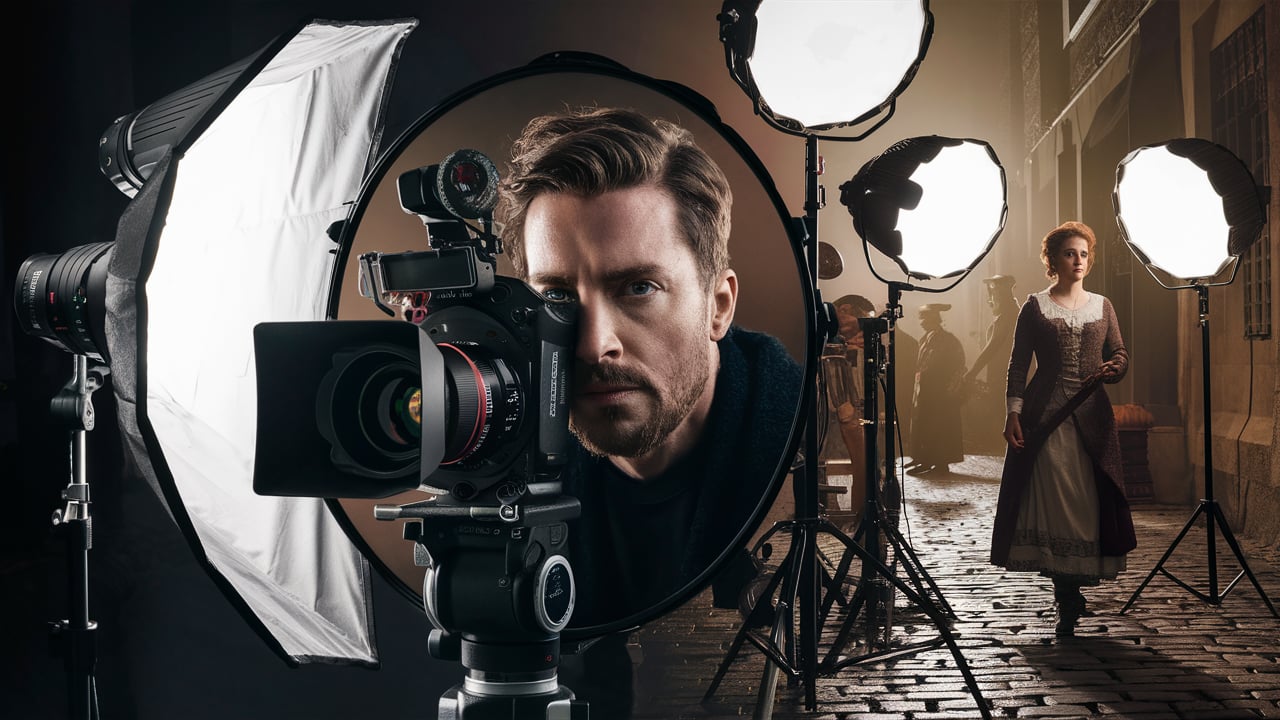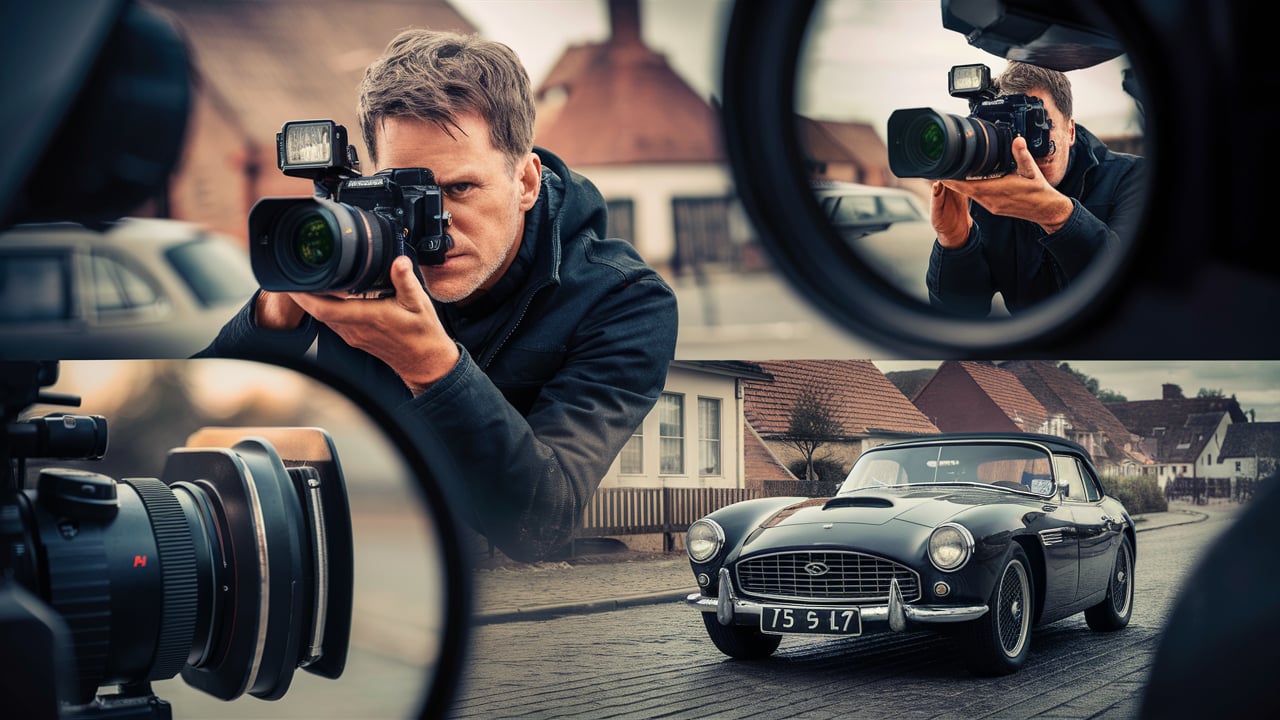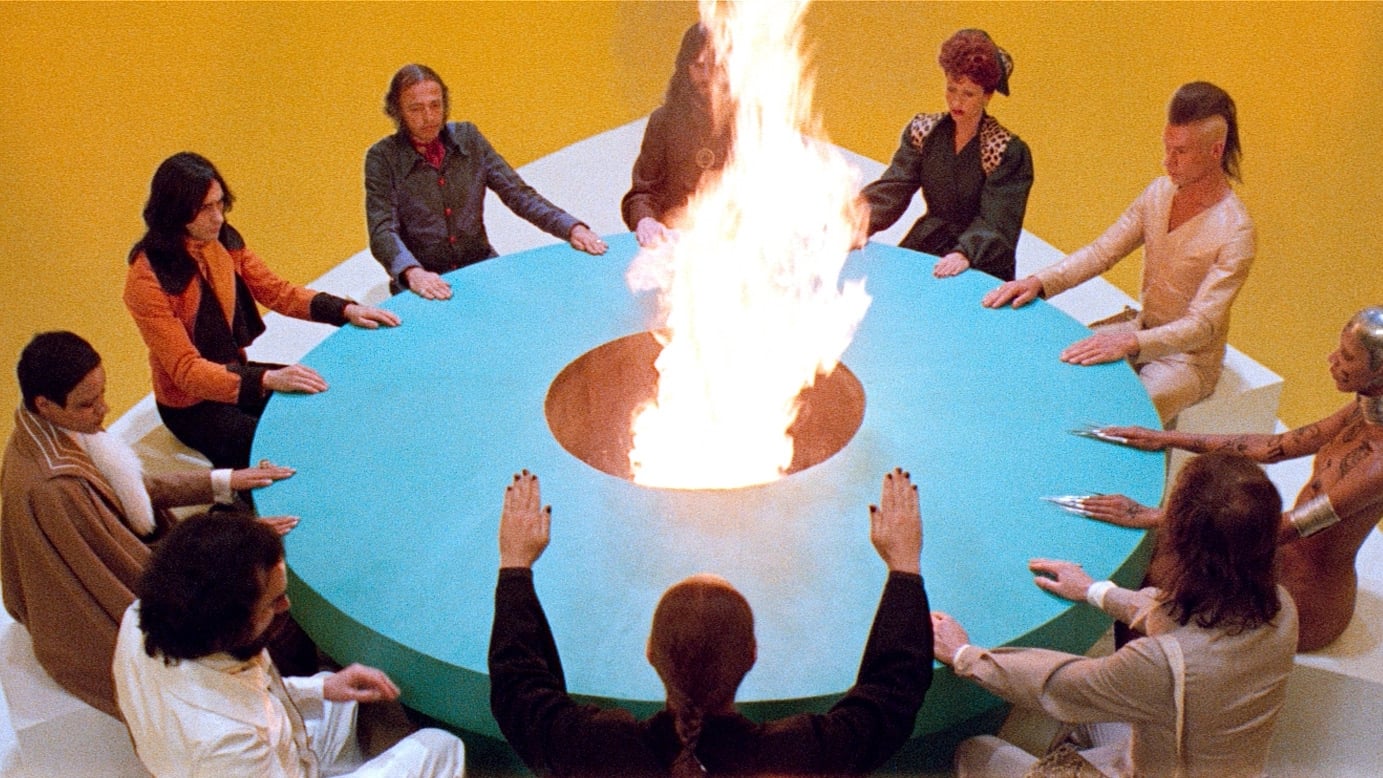Wide-angle lenses offer several unique advantages and can be used in various scenarios to achieve specific effects and results. Here are the main reasons to use wide-angle lenses:
1. Expansive Scenes.
- Landscapes: Wide-angle lenses are ideal for capturing broad, sweeping landscapes. They allow you to include more of the scene in your frame, showcasing the vastness of natural environments.
- Architecture: When photographing buildings and interiors, wide-angle lenses help capture the entire structure or room, making them essential for architectural photography.
2. Depth and Perspective.
- Enhanced Depth: Wide-angle lenses exaggerate the sense of depth in a scene. They make foreground objects appear larger and more prominent while making background elements seem smaller and farther away. This effect can create dynamic and visually interesting compositions.
- Creative Perspectives: By emphasizing the spatial relationship between objects, wide-angle lenses can produce unique and dramatic perspectives that are not possible with longer focal lengths.
3. Close Proximity Shooting.
- Tight Spaces: In confined or crowded spaces, a wide-angle lens allows you to capture more of the scene without needing to step back. This is particularly useful in small rooms, narrow streets, or packed events.
- Close-Up Context: When photographing close-up subjects, wide-angle lenses can include more of the surrounding environment, providing context and background that adds to the story of the image.
4. Dynamic Composition.
- Foreground Interest: Wide-angle lenses can emphasize the foreground of a scene, making it a compelling element of the composition. This technique can lead to more engaging and layered images.
- Leading Lines: The exaggerated perspective of wide-angle lenses can create strong leading lines that guide the viewer’s eye through the image, adding depth and interest.
5. Environmental Portraits.
- Contextual Portraits: Wide-angle lenses are useful for environmental portraits, where the background and surroundings are an important part of the story. They allow you to capture the subject and their environment in a single shot.
6. Action and Event Photography.
- Capturing the Scene: In action or event photography, wide-angle lenses can capture the entire scene, including the main subject and the surrounding activity. This approach is great for documenting events, sports, and concerts.
7. Vlogging and Selfies.
- Vlogging: Wide-angle lenses are popular among vloggers because they allow the vlogger to capture themselves and their surroundings while holding the camera at arm’s length.
- Selfies: For selfies or group shots, wide-angle lenses ensure everyone fits in the frame without the need for an extended reach.
Considerations When Using Wide-Angle Lenses.
- Distortion: Wide-angle lenses can introduce distortion, particularly at the edges of the frame. This can be used creatively, but it’s important to be aware of it and manage it when necessary.
- Framing and Composition: Due to the broader field of view, careful attention to framing and composition is required to avoid distracting elements and to make the most of the scene.
Summary.
Wide-angle lenses are versatile tools that can enhance your photography by capturing expansive scenes, creating dynamic compositions, and providing unique perspectives. They are invaluable for landscape, architecture, environmental portraits, and many other types of photography where including more of the scene and emphasizing depth are desired.

In the enchanted realm of visual storytelling, where every camera angle is a brushstroke and every frame a note in a symphony, lies a universe waiting to be discovered. Welcome to the wondrous world of cinematography, where each angle holds the power to shape emotions, convey narratives with unwavering intensity, and paint vivid stories that linger long after the screen dims.
Today, dear reader, we embark on an educational odyssey through eight spellbinding camera angles – each a maestro in its own right, conducting visual symphonies that resonate deep within our souls.
Imagine stepping onto the stage of your favorite film or witnessing the spectacle from behind the lens – an adventure where you are both creator and audience, capturing moments that pulse with life and meaning. These cinematic secrets will unravel before you like an intricately woven tapestry of light and shadow, revealing tales untold and emotions unbridled.
Travel beyond mere observation; become a voyager navigating realms of high stakes drama from soaring heights or grounding yourself in raw emotion from fascinating low angles. The journey ahead is not just educational but transformative – a dance between perception and reality guided by angles that breathe life into stories waiting to be unleashed upon the world.
Join us on this mesmerizing quest as we unveil the magic of cinematography’s hidden gems – for in their mastery lies the key to unlocking visual symphonies that will echo through eternity.
The Classic: Eye-Level Angle.
In the symphony of visual storytelling, the eye-level angle stands as a timeless melody that resonates with audiences on a profound level. Imagine sharing a gaze with characters at their exact eye level, an unspoken connection forged through this subtle yet impactful perspective.
This angle acts as the bridge between viewers and the on-screen personas, allowing us to step into their shoes effortlessly. From sweeping landscapes to intimate conversations, the eye-level angle invites us to experience each moment as if we are present within the scene itself, breathing life into narratives with authenticity.
Consider the iconic film “Forrest Gump,” where the camera captures Forrest’s journey through history from his eye-level perspective. This deliberate choice immerses viewers in his emotional world, fostering empathy and understanding at a visceral level.

Similarly, in “E.T. the Extra-Terrestrial,” Spielberg masterfully uses eye-level angles not only to portray Elliott’s bond with E.T. but also to evoke a sense of wonder and innocence palpable throughout the film’s narrative arc. These classics remind us of the subtle yet profound impact an eye-level angle can have on our emotional engagement with cinematic stories.
The beauty of the eye-level angle lies in its ability to speak a universal language – that of human connection and relatability. Whether laughing alongside characters or shedding tears in moments of vulnerability, this angle serves as a visual thread that weaves together viewers and protagonists in a shared journey of emotions.
As you delve deeper into the realm of cinematography, remember that sometimes, it is through looking directly into someone’s eyes – even through a screen – that we discover our own reflections staring back at us with unparalleled resonance and depth.
The canvas of visual storytelling.
As the canvas of visual storytelling expands, the high angle shot emerges as a brushstroke of vulnerability and insignificance on the screen’s tapestry. Like a bird soaring above its prey, this camera angle casts characters in a moment of exposure, laying bare their fragility for audiences to witness.
Consider Alfred Hitchcock‘s mastery in “Vertigo,” where Scottie gazes down from San Francisco’s bell tower—an epitome of vulnerability and fear heightened by the dizzying height. High angles serve as emotional conductors, orchestrating suspenseful crescendos that leave viewers teetering on the edge of anticipation.
In the symphony of visual artistry, the high angle shot acts as a spotlight illuminating power dynamics within scenes. From Shakespearean tragedies to modern blockbusters, directors maneuver this cinematic tool to demonstrate dominance or submission with finesse.
In “The Godfather,” Francis Ford Coppola employs high angles during pivotal moments, casting shadows of authority over Michael Corleone as he ascends in power—a visual testimony to the rise and fall inherent in narratives. Audiences are not merely spectators but participants in this dance of perceptions orchestrated by filmmakers.
Filmmakers craft emotions like alchemists crafting gold; through strategic high angle shots, they distill potency into every frame. By situating viewers atop an invisible precipice looking down upon unfolding events, directors weave tension into narratives seamlessly.
Imagine Christopher Nolan’s mind-bending masterpiece “Inception,” where dreamscapes unravel beneath our gaze from towering heights—each scene designed to evoke awe and trepidation simultaneously. The high angle shot becomes a prism refracting emotions onto spectators’ souls—immersing them in a whirlwind of feelings choreographed by the symphony conductor behind the lens.
Grounded Realism: Low Angle Shot.
When it comes to capturing raw power and authority on screen, few camera angles can match the impact of a low angle shot. By positioning the camera below the subject’s eye level, this technique elongates figures, making them loom large and imposing.
Viewers are instantly drawn into a scene where characters exude dominance and control with every commanding gaze. Imagine gazing up at a towering figure through the lens of a filmmaker’s vision, feeling small and insignificant in their presence.
The psychological effect of a low angle shot is profound. As viewers experience a scene from this lower perspective, they are instinctively made to feel subservient or overpowered by the characters before them.

Through clever cinematography, directors manipulate these shots to instill emotions of awe or intimidation within audiences. Picture iconic moments like when Darth Vader’s menacing figure fills the frame in “Star Wars,” using low angle shots to emphasize his authoritarian presence that strikes fear into the hearts of both rebels and viewers alike.
Renowned movies have seamlessly integrated low angle shots to emphasize themes of heroism or dominance. In Christopher Nolan’s “The Dark Knight,” Batman is often captured in heroic low angle shots, symbolizing his strength and unwavering resolve against Gotham City’s criminal underbelly.
These cinematic choices not only elevate the character but also immerse audiences in a world where heroes stand tall against adversity, all through the strategic placement of a single camera angle.
The Bird’s-Eye View: Overhead Shot.
Embracing the mesmerizing allure of cinematography, the bird’s-eye view, or overhead shot, serves as a lighthouse guiding viewers through intricate narrative landscapes. From the dizzying heights of this perspective, audiences are bestowed with a god-like omniscience over the unfolding drama below.
This camera angle acts as a compass for decoding visual stories, offering an encompassing view that transcends mere observation. Just as an artist meticulously crafts every brushstroke to compose a masterpiece, directors delicately orchestrate these shots to unveil hidden treasures within their cinematic tapestries.
In the realm of cinema magic, overhead shots function like an eagle soaring above its domain, encapsulating vast symphonies within single frames. Picture a labyrinthine cityscape sprawled beneath your gaze—a bustling metropolis echoing with untold tales and secrets waiting to be unveiled.
It is from this vantage point that directors infuse scenes with grandeur or intimacy, revealing not just what lies before but also what lies beneath each character’s facade. Think of Hitchcock’s masterful use of the overhead shot in “Vertigo,” where Scottie Ferguson’s spiraling obsession mirrors the downward spiral caught in ethereal yet haunting imagery—a tapestry woven with suspense and psychological depth.
Directors deftly deploy bird’s-eye views to peel back layers of complexity within narratives like intricate origami folds—each turn offering new angles to appreciate crafted artistry. Through this lens, spatial relationships dance before our eyes like constellations in motion; we witness hidden connections materialize and diverge within the confines of each frame.
Consider Wes Anderson’s whimsical visual language in “The Grand Budapest Hotel,” where overhead shots transform set pieces into living dioramas—inviting viewers to lose themselves in meticulous details and quirky symmetries that echo thematic undercurrents throughout his whimsical tale.
Unlocking the visual symphony presented by bird’s-eye views delves beyond mere observation—it invites audiences on panoramic odysseys brimming with emotional crescendos and resonating harmonies bound by storytelling threads.
Directors wield this powerful tool like conductors leading a kaleidoscope orchestra—shaping moods and unraveling mysteries through meticulously framed compositions designed to captivate hearts and minds alike.
In essence, embracing this aerial viewpoint allows filmmakers to transcend earthly constraints, guiding us on transformative journeys where perception meets imagination in an endless waltz of visual wonderment.
Dynamic Movement: Tracking Shot.
In the symphony of visual storytelling, tracking shots conduct a ballet of movement, seamlessly guiding audiences through dynamic sequences with grace and precision. Like a choreographed dance, these shots sweep viewers into the heart of scenes, enveloping them in the action.
The fluidity of tracking shots not only adds a cinematic flair but also serves as a storytelling tool, enabling directors to orchestrate narratives with rhythmic finesse.
Executing flawless tracking shots requires a mastery that blends technical expertise with creative vision. Cinematographers must navigate intricate setups, smoothly coordinating camera movements with actors’ actions to maintain seamless continuity.

This fusion of skill and artistry is exemplified in Quentin Tarantino’s “Kill Bill” where an iconic tracking shot follows Uma Thurman’s character down a corridor as she confronts adversaries, intensifying both the physical and emotional beats of the scene.
The magic of tracking shots lies in their ability to enhance narrative flow by physically propelling audiences through pivotal moments. Think of Martin Scorsese’s legendary Copacabana nightclub sequence in “Goodfellas,” where a breathtaking long take—a variation of the tracking shot—immerses viewers in the protagonist’s glamorous yet perilous world.
As we glide alongside Henry Hill, we experience his ascent into criminal life firsthand, feeling every exhilarating rush and impending danger thanks to this masterful cinematographic technique.
A Peek Behind the Scenes: Point-of-view Shot.
Imagine being whisked away into the soul of a character, seeing the world through their very eyes – every beat of their heart, every flicker of emotion. That’s the captivating allure of point-of-view shots, seamlessly transporting audiences into the intimate realms of protagonists. From timid whispers to thunderous roars, point-of-view shots breathe life into narratives by ensnaring viewers in characters’ minds and hearts.
Filmmakers craft these shots not merely as windows but as portals to empathy and engagement, beckoning viewers to walk a mile in characters’ shoes. Through strategic manipulation of perspective and focus, directors bend emotions like light through a prism.
Think of Alfred Hitchcock’s masterful use of point-of-view shots in “Psycho,” where through Norman Bates’ eyes, terror transcends mere visuals; it becomes palpable – a haunting presence that lingers long after the screen fades to black.

In this mesmerizing dance between filmmaker and audience, point-of-view shots serve as conduits for emotional alchemy. By playing with angles and depths, creators can induce heart-pounding suspense or tender vulnerability with precision akin to an artist’s brushstroke.
Take the poignant example from “Lady Bird,” where Greta Gerwig’s judicious employment of point-of-view shots invites us to taste adolescence’s bittersweet nectar alongside our endearing protagonist.
Crafted wisely, these shots transcend mere visual aids; they become pivotal players in a symphony of storytelling notes. By understanding how to weave seamless transitions between perspectives or amplify tense moments with clever viewpoints, aspiring filmmakers can etch their narratives deep into viewers’ hearts.
The artistry behind skillful utilization of point-of-view shots illuminates that sometimes, true magic lies not just in what we see but how we see it – through someone else’s eyes.
Reveling in Unconventional Elegance: The Enigmatic Dutch Angle.
As we descend through the kaleidoscope of camera angles, our journey reaches its final crescendo with the enigmatic Dutch angle. Like a conductor orchestrating dissonant notes to create harmony, filmmakers masterfully utilize Dutch angles to infuse scenes with a sense of disorientation or psychological turmoil.
With a tilt that defies convention, these angles immerse viewers into a world where reality blurs and emotions run deep, adding layers of complexity that titillate the senses.
Through the mesmerizing lens of the Dutch angle, visual storytelling transcends traditional boundaries, unlocking realms where unease dances with beauty and surrealism whispers truths untold. Each camera angle explored in this symphony has contributed its unique melody to the narrative tapestry – from the grounding power of low angle shots to the soaring heights of high angles.
Together, they form a visual opera that captivates hearts and minds, reminding us that every frame is a brushstroke on the canvas of cinematic artistry.
Let us embrace these angles not merely as tools but as magicians weaving illusions that transport us to worlds uncharted and emotions unfathomed. In this realm of infinite possibilities, may your lens capture not just images, but echoes of dreams yet dreamt and stories waiting to be told.

I am a highly experienced film and media person who has a great deal to offer to like-minded individuals. Currently working on several exciting projects, I am a film and media practitioner for over a decade. I have achieved a great deal of success in my professional career.





